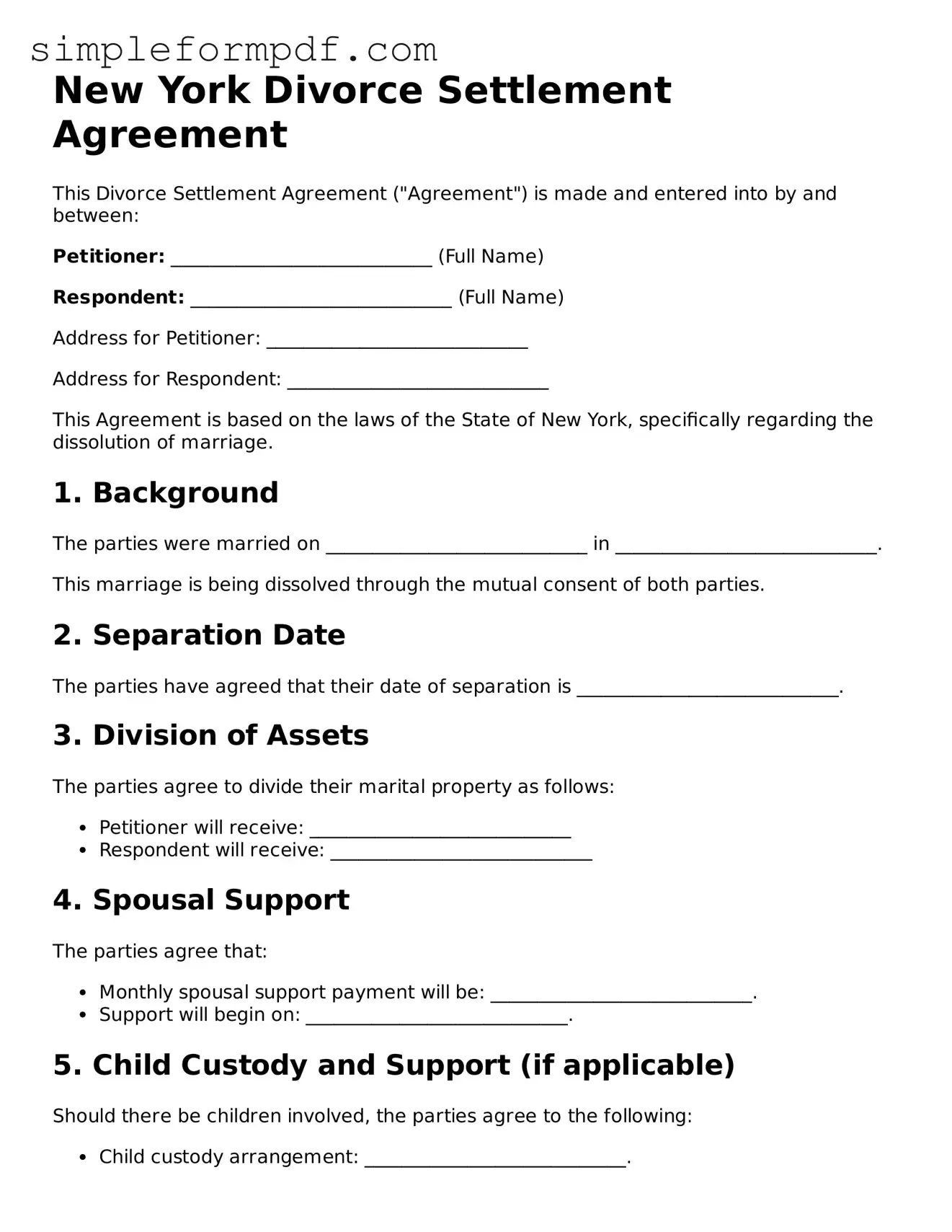New York Divorce Settlement Agreement
This Divorce Settlement Agreement ("Agreement") is made and entered into by and between:
Petitioner: ____________________________ (Full Name)
Respondent: ____________________________ (Full Name)
Address for Petitioner: ____________________________
Address for Respondent: ____________________________
This Agreement is based on the laws of the State of New York, specifically regarding the dissolution of marriage.
1. Background
The parties were married on ____________________________ in ____________________________.
This marriage is being dissolved through the mutual consent of both parties.
2. Separation Date
The parties have agreed that their date of separation is ____________________________.
3. Division of Assets
The parties agree to divide their marital property as follows:
- Petitioner will receive: ____________________________
- Respondent will receive: ____________________________
4. Spousal Support
The parties agree that:
- Monthly spousal support payment will be: ____________________________.
- Support will begin on: ____________________________.
5. Child Custody and Support (if applicable)
Should there be children involved, the parties agree to the following:
- Child custody arrangement: ____________________________.
- Monthly child support payment will be: ____________________________.
6. Debt Responsibility
Both parties agree on the following regarding debts:
- Debts assigned to Petitioner: ____________________________.
- Debts assigned to Respondent: ____________________________.
7. General Provisions
The parties agree that:
- This Agreement constitutes the entire agreement between the parties.
- Any amendments must be in writing and signed by both parties.
8. Signatures
By signing below, both parties agree to the terms outlined in this Agreement.
____________________________
(Petitioner Signature)
Date: ____________________________
____________________________
(Respondent Signature)
Date: ____________________________
This Agreement is intended to be legally binding under the laws of the State of New York.
